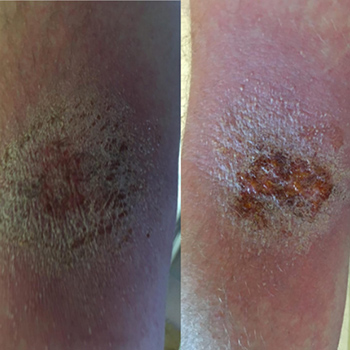Keywords
Baboon syndrome, symmetrical drug-related intertriginous and flexural exanthema, amoxicillin, penicillin
Abstract
Baboon syndrome, also called symmetrical drug-related intertriginous and flexural exanthema (SDRIFE), is an erythematous maculopapular rash that presents in skin folds in a symmetrical pattern. This condition may develop after the patient starts a particular agent. Treatment consists of stopping the associated trigger and medicating with topical or systemic corticosteroids.
A 30-year-old man with odynophagia, otalgia and fever was prescribed amoxicillin. He developed erythematous and pruriginous lesions in the cubital fossa and inguinal regions. He attended the emergency department (ED) where he was prescribed penicillin. Lesions continued to progressively worsen with a bilateral symmetrical pattern in the axillary region and later in the nape folds, popliteal regions, and on the perineum and buttocks. The patient presented to the ED for a second time, where he was diagnosed with baboon syndrome and prescribed topical steroids with clear improvement.
References

Views: 714
HTML downloads: 545
PDF downloads: 471
Published:
2021-12-02
Issue:
2021: Vol 8 No 12
(view)










